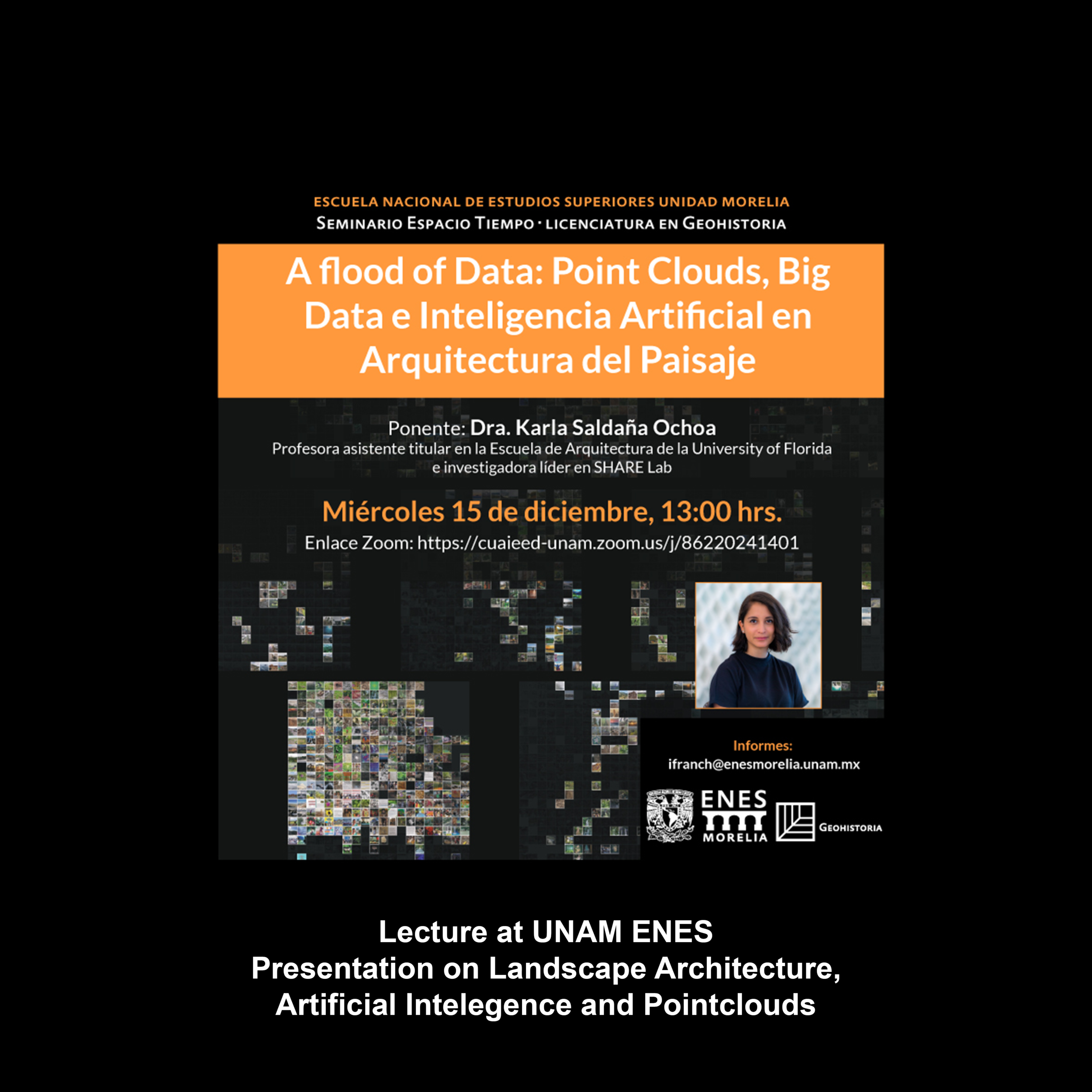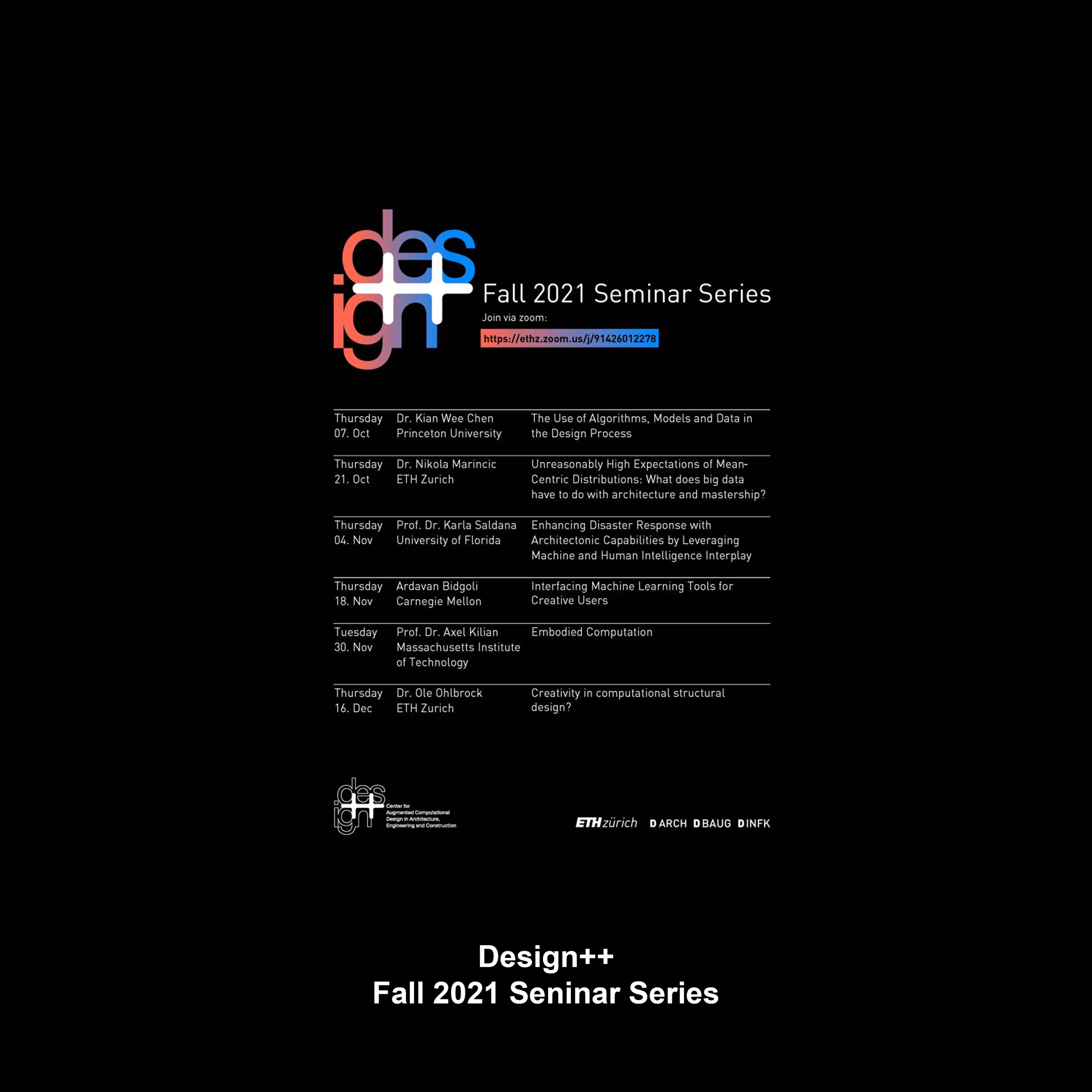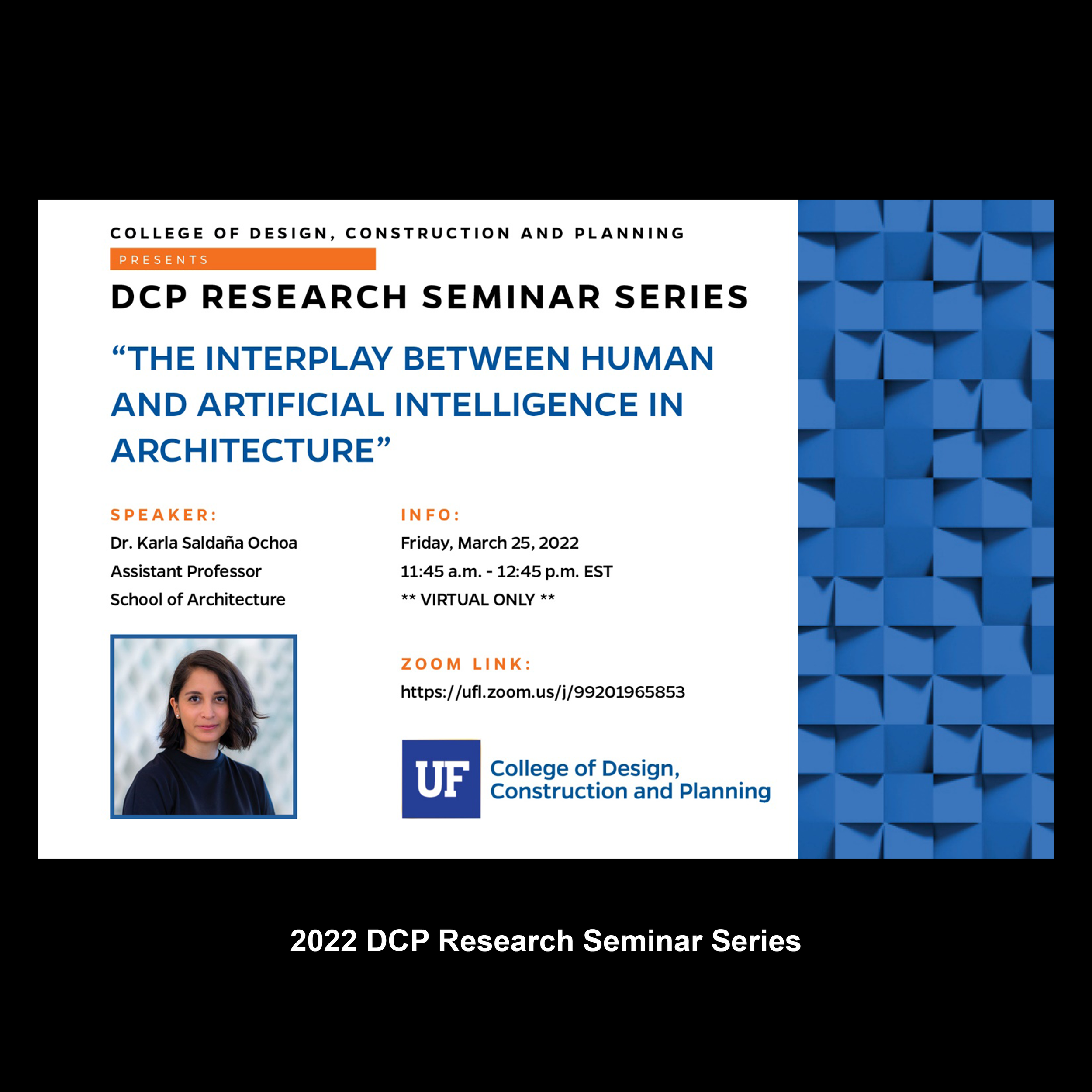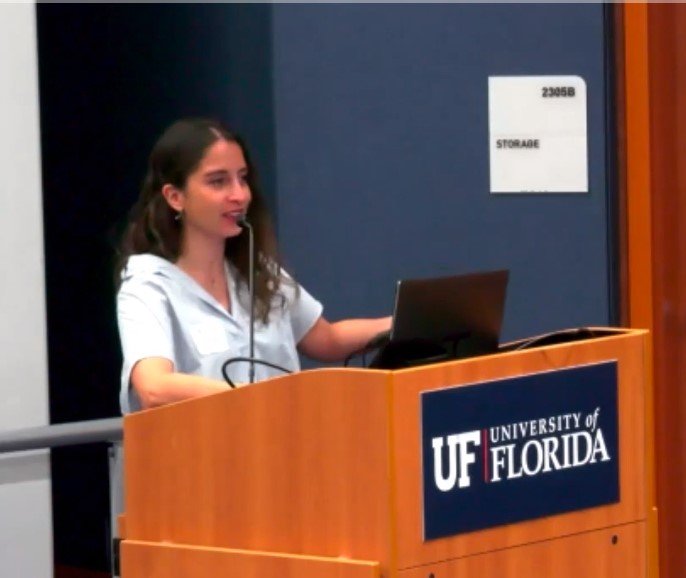Spatial
Human-Centered
Artificial Intelligence
Research &
Experimentation
The SHARE Lab
-
With today's ubiquitous computing and urbanized cities, we produce and store vast amounts of data from diverse sources, including videos, images, text, and sensor readings. This information ranges from individual experiences to city-wide data. Making sense of such a volume and variety of data requires AI and computational tools to extract meaningful insights and support rapid, informed decision-making. This is precisely where architects and landscape architects can have a significant impact. Architectural training prepares students to synthesize complex, multi-layered information and communicate ideas across different scales and disciplines. Design thinking allows us to use AI not simply as a tool but as an instrument and an integral part of our creative and analytical processes. AI enhances our capabilities, enabling architects to create AI applications that classify, predict, and generate design outcomes based on large, complex datasets. Whether detecting changes in satellite imagery before and after a disaster, embedding carbon sequestration metrics into land-use planning tools, or creating structurally informed 3D forms from text prompts, AI becomes a natural extension of our approach to design. As architects and designers, we do more than respond to the built and natural environment—we interpret, simulate, and reimagine it. AI provides us new means to do so with greater intelligence, ethics, and scale. In recent years, the SHARE lab has aimed to digitally recreate physical environments using laser scanners, procedural modeling, and photogrammetry, ranging from the scale of a single room to an entire city. The lab is also developing interfaces that allow users to explore and analyze these spaces in augmented reality. Finally, we envision incorporating all AI applications developed at the SHARE Lab to enrich digital models with multiple data layers to create intelligent virtual replicas. These virtual replicas, intelligent environments, are compelling communication tools and powerful analytical platforms valuable in planning, designing, constructing, and managing built environments.
-
Recognizing this potential, at the SHARE Lab, we focus on preparing the next generation of designers to engage meaningfully with AI. Therefore, we developed an AI Graduate Certificate in Architecture to equip students with technical skills and theoretical frameworks to interact with emerging technologies critically. The certificate includes four courses: Fundamentals of Coding and Computation for Architects, which introduces programming and computational thinking; AI and Ethics in Architecture, grounded in the concept of double articulation, where students explore dualities such as data/information and landscape/territory while rethinking architectural curricula; Machine Learning for Architects, which presents contemporary algorithms and their applications in architectural practice; and the AI Design Studio, where students apply what they've learned in a comprehensive design project. Training architects for the future means teaching them how to use AI and preparing them to question, shape, and ethically guide its use in building more resilient, intelligent, and equitable environments.
-
To foster broader innovation and interdisciplinary collaboration, we organized two international conferences that reflect the dual role of AI in our field. Playing Models focuses on AI for creativity, exploring how artificial intelligence can inspire new design methodologies. Resilience in the Built Environment toward the SDGs emphasizes AI for social good, addressing pressing global issues such as climate change, disaster response, and social equity. These initiatives—across research, teaching, and public dialogue—aim to position architects not just as users of AI but as active contributors to shaping how this technology transforms the built environment for the better.
-
The SHARE Lab strategy has followed a phased approach: We leveraged internal funding during Years 1–2 to initiate research and develop pilot projects. In Years 3–5, we focused on building strong partnerships with industry leaders. By Years 5–7, we will begin applying for larger external grants with solid proof-of-concept and institutional backing. This strategic growth has enabled the SHARE Lab to turn early-stage ideas into scalable, impactful work. We have partnered with leading industry collaborators such as NVIDIA, Autodesk, SIEMENS, and IMERZA, bringing visionary projects to life through research, application, and public engagement.
Who we are
We are a research laboratory at the University of Florida in the School of Architecture. Our primary interest is in Human-Centered AI in design practices. In the SHARE Lab, we solve multidisciplinary research problems. In the past, we have worked on topics related to landscape architecture, architecture, agriculture, urban studies, structural design, public health, and disaster management.
What we do
The research at SHARE Lab has two objectives: 1. AI as a tool to empower creativity and 2. AI for social good. Both are particular and convoluted within the umbrella topic of Human-Centered AI.
AI as a TOOL or an INSTRUMENT
AI can be used as a practical tool, like a hammer or lever, to address specific problems or tasks such as playing chess, image recognition, or text generation. However, it is also essential to consider AI as an instrument comparable to a pen, paper, or a violin. The primary distinction between a tool and an instrument lies in their interaction with the user's creativity. Those are tools such as a lever or a motor. And instruments such as a typewriter or a computer can be easily distinguished by their use.
The instruments themselves have no particular use and are so generic that they require human interaction to articulate a result.
AI to empower creativity
In contrast, a tool itself is created for a particular and specific use and is defined for a certain action.
AI for social good
AI is so versatile that it can be used as a tool or as an instrument, and it allows communication between different domains.
Featured Work
Development of a Machine Learning Modelling Tool for Predicting Incident HIV Using Public Health Data from a County in the Southern United States
A Comparative Analysis of Traditional and Machine Learning Approaches
Playing Models 2024 - Conference
News
Prof. Dr. Karla Saldaña Ochoa
University of Florida
College of Design, Construction and Planning
School of Architecture, office 252
1480 Inner Rd, Gainesville, FL 32611

















